Last week, we talked about primary fermentation and the role of yeast in turning that deliciously sweet grape juice into wine. But that’s not the end of the story.
Rob is also a big fan of a secondary fermentation called Malolactic fermentation (or MLF). While this bacterial fermentation occurs naturally for most red wines, it is also a handy tool in the production of some white wines.
Let’s find out why…
What is MLF?
Malolactic fermentation is a secondary bacterial fermentation which often occurs naturally after the completion of primary fermentation. It can also be induced by inoculation with a selected bacterial strain. Oenococcus oeni, a member of the lactic acid bacteria (LAB) family, and is the main bacterium responsible for conducting MLF. This strain is chosen due to its ability to survive the harsh conditions of wine (high alcohol, low pH and low nutrients) and its production of desirable wine sensory attributes.
MLF is crucial to microbiologically stabilise most red wines. MLF removes the malic acid in wine that can be a carbon source for yeast and bacterial growth, leading to spoilage, spritz and unwanted flavours.
(Source: AWRI)
MLF can also be conducted in some wines to influence wine style, which is what Rob like to do with our Fumé Blanc, Chardonnay and Rosé.
In addition to the important conversion of the harsh malic acid to softer lactic acid, MLF is associated with a broad range of other metabolic processes that impact on a wine’s sensory profile. Wine aroma and flavour are affected by volatile compounds, while non-volatile compounds influence the palate or mouth-feel of wine. Sensory terms such as ‘buttery’, ‘vanilla-like’, ‘nutty’, ‘spicy’, ‘fruity’, ‘vegetative’, ‘toasty’, ‘fuller’ and ‘rounded’ are used to describe MLF influences on wine.
You’ll definitely hear a few of these terms used when describing the Fumé, Chardy and Rosé!
(Source: AWRI)
Update from the winery
Chardonnay and the Fumé Blanc are both now in barrel, while they finish the last of the primary fermentation. The Fume is very nearly complete (with the Baumé now below zero), while the Chardonnay is still at around 2.2 Baumé at last check (on Wednesday).
Pinot Noir Rosé is at 1.6 Baumé. This fermentation has been nice and steady, which is exactly what a wine-maker hopes for. Rob expects that will continue right the way through to the completion.
Why does the ferment need to progress steadily?
If the fermentation happens too quickly, then the temperature of the ferment increases. High temeperatures can encourage oxidation, microbiological spoilage and instability. It can also deplete the desirable aroma and flavour compounds, as well as alcohol. Above 38 degrees celcius, the yeast becomes “sluggish” and the fermentation may become “stuck” with residual sugar.
With a slow fermentation, there is a risk that the fermentation process will stop altogether, with the colder temperatures killing the yeast. The only option then is to reinoculate the ferment with more yeast to start the process again. This also interferes with the aroma and flavour of the wine. Also, the risk of oxidation is very high.
(Source: Making Good Wine, B. Rankine)
Sauvignon Blanc in tank is slowing up a bit. At last check, the Baumé was at 1.1. It is still moving slowly though, so Rob’s not concerned that it will stop. He may need to give it a bit of a stir though, to get the yeast up off the bottom of the tank and doing what they’re supposed to do!
Pinot Noir dry red in barrel has finished fermentation. It is lovely and dry!
So, what happens next…?
All these wines (except for the Sauvignon Blanc in tank) will be inoculated with the malolactic bacteria to start the secondary fermentation. This won’t happen though until all the sugar in each of the wines has been fermented. This is because there is always a risk of acetic acid production when bacteria are added in the presence of sugar. Once the bacteria are added, it takes a while for them to get going. So watch this space!
“But I want to see (and taste) all of this in real life!”
Well, you can!
There are still a couple of seats left at our next tasting event on Sunday (April 8, 11am – 1.30pm)!
Meet Somerled’s Newest Wines: Rob Moody and the entertaining Hugh Armstrong pair up again, bringing you so much knowledge and behind the scenes secrets when it comes to winemaking. They’ll pour these in-process Somerled wines to hold up against our current vintages and – as always – will pour a special wine for you at the end with commentary from Rob! All presented with a sumptuous platter luncheon including Manchego, terrine, pate, crusty French loaves, locally churned butter and all manner of sides. $65pp includes luncheon, book here.
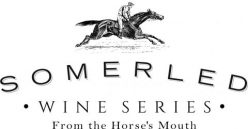
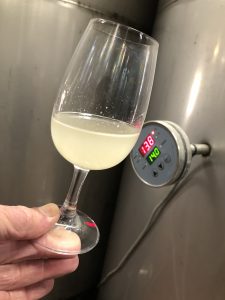 Our Sauvignon Blanc is about 70% through fermentation and is fabulously aromatic.
Our Sauvignon Blanc is about 70% through fermentation and is fabulously aromatic.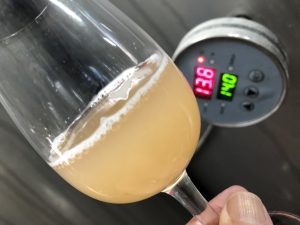 It is still very early days for the Chardonnay. You may remember that the Chardonnay started out cloudy like this – and yet last week if appeared crystal clear and golden! The grape solids had settled to the bottom, rendering it lovely and bright. Now it’s cloudy again – not because of grape solids this time, but because it is now chock full of yeast cells.
It is still very early days for the Chardonnay. You may remember that the Chardonnay started out cloudy like this – and yet last week if appeared crystal clear and golden! The grape solids had settled to the bottom, rendering it lovely and bright. Now it’s cloudy again – not because of grape solids this time, but because it is now chock full of yeast cells.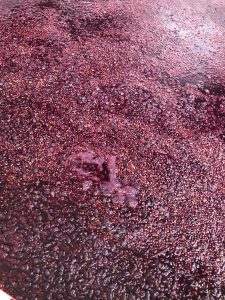
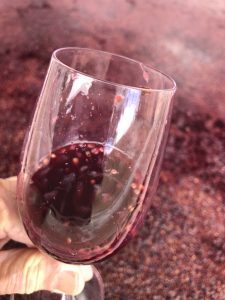 Pinot Noir for our dry red was
Pinot Noir for our dry red was